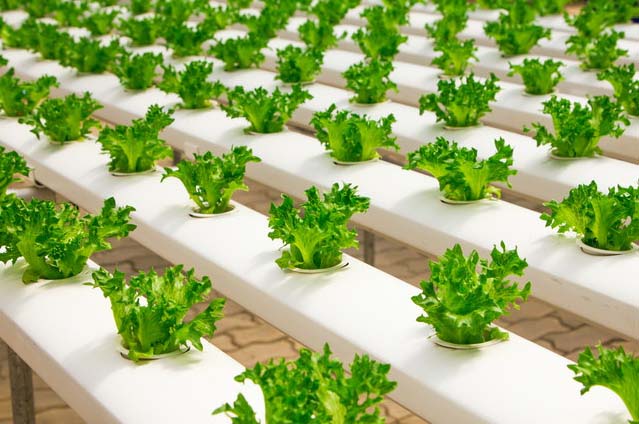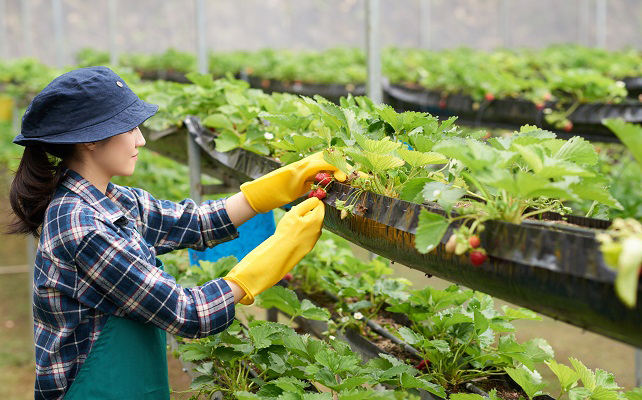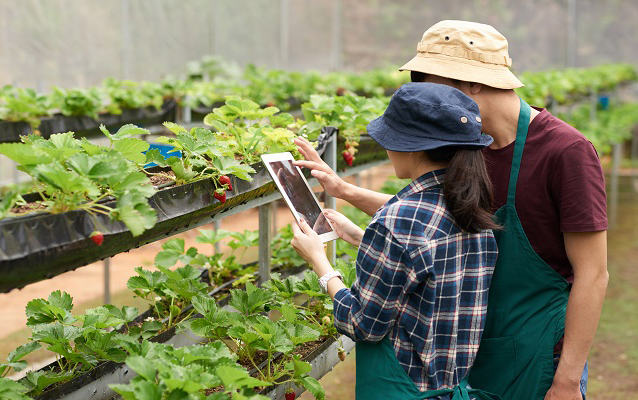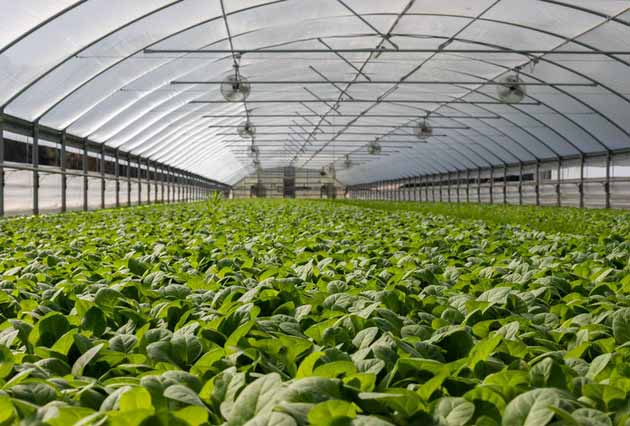People need food to survive. The main source of any food comes from farming. Regular peasant class people work hard for this. Cultivation requires proper water, weather, and land. But now, according to a 2015 survey, the world’s population has grown by 40 percent. As a result, one-third of the cultivable land lost to the peasantry. For this, vertical farming system can become the beautiful farming of the future. The present world has paid special attention to the method of growing more crops at less cost in less space.
According to the survey, the world’s population will estimate at 9 to 10 billion by 2050. Where there will be a crisis of proper food to satisfy the hunger of every human being. We need to keep in mind that as the population grows. There will be no shortage of food to meet the food needs of every human being. Population growth as well as meeting the food needs of every human being has become a major challenge.
If you are a skilled person and are thinking of farming with the future in mind, then this article is for you. Let us know through a brief discussion below. What this vertical farming actually is and the process method of this farming with its advantages and disadvantages.
What is vertical farming?

If we know the right information before doing any work, we have many benefits to do that work. You want to do something with some improvements in vertical farming in the future. But you do not know what is vertical farming. You will find a lot of such information on the internet but you will not get the right idea through more or less information. In this article, we will try to give you a clear idea about vertical farming technology.
So the first question is what is vertical farming? It is a means of cultivating crops at a vertical level. This cultivation includes soil-less agricultural fields like hydroponics, aquaponics, and aeroponics. In the same case in a small space, you can grow different crops in layers. In a vertical farming system, the use of buildings, shipping containers, tunnels, etc. in a farming house is significant.
At the present world, 74 acres of land are cultivate using this vertical farming system. In 1999, Dickson Despommier used this vertical farming model. Dickson Despommier was a Colombian professor of public and environmental health. This vertical farming model created by him caused a stir all over the world. In this model, he showed that crops grown together could satisfy the hunger of at least 50,000 people. Vertical farming technology can produce huge quantities of crops in a small space.
#Techniques of Vertical Farming:
1. Hydroponics:
Hydroponics is a process where there is no need for soil. Essential elements for plant growth such as nutrition, water, carbon dioxide, open-air are sufficient. Where the soil only helps to keep the plant straight. There is no need for the soil in hydroponics for that. In vertical farming, it is possible to grow and yield as soon as one of the essential elements for tree growth is obtained. A putto is using in a hydroponics system to obtain from fish feces, duck feces, artificial chemical fertilizers. Tomatoes, cucumbers, strawberries, and lettuce are grown by the hydroponic method.
Click here for all details.
2. Aquaponics:
Aquaponics is basically a stage of hydroponics where there is no need for soil. Just as hydroponics cultivates crops without soil only on water, aquaponics cultivates food grains in water. Only here in the water extra fish farmed. As a result, the plant receives its essential nutrients through fish waste and fish feed.
3. Aeroponics:
Aeroponics is a process similar to hydroponics. The term aeroponics is basically a mixture of the Greek words air and ponos. Aeroponics systems use mechanical hydroelectricity, essential water, and aqueous minerals, water vapor. Healthy food grains such as potatoes, lettuce, strawberries, coriander, and other vegetables produced by spraying electricity and water vapor.
4. Controlled-Environment Agriculture:
Controlled Environment Agriculture has taken agriculture to another level. Through this the weather of the crop produced can be completely controlled. That means water, air, light, natural weather, everything needed to produce a good food grain can be controlled. In Vertical Farming, it is possible to do Controlled Environment Agriculture by artificially turning a certain room into a greenhouse room. Controlled Environment Agriculture can control natural disasters such as erosion, excess rainfall, drought, flood etc.
#Types of vertical farming:
There are three common types of vertical farming. Types of vertical farming are divided into three parts, mainly based on Dickson Despommier’s model. Types of shots are discussed below.
- Building Base Vertical Farming: The process is basically shooting abandoned houses. This makes it possible to produce many food grains together vertically in a small building.
- Shipping-container Vertical Farming: Shipping-containers are used in vertical farming by making them reusable. Cultivation on a small scale is carried out in small containers artificially through hydroponics process with improved climate control, light control and weather control.
- Deep farms Vertical farming: The method mainly selects abandoned mining areas. This is because for the production of food grains, the mine areas here are cultivated in a vertical manner by tunnels deep under the ground. A study has shown that it is possible to increase the crop produced by using deep farms vertical farming 10 times more than the crop grown on land.
#How Vertical Farming Works:
The world’s population expected to grow by about 9 to 10 billion in the next 30 years. But enough agricultural land to produce that amount of food grains will not be available in the coming days. For this, the plan of vertical farming and all the agricultural scientists of the present world are always striving. Vertical farming, based on Dickson Despommier’s model, is built in a large abandoned building where food grains are grown using aeroponics at the top, hydroponics in the middle, and aquaponics at the bottom. As a result, food grains produced in a small space to feed a large number of people at once.
#Advantages and disadvantages of vertical farming:
There are advantages as well as disadvantages to doing a project. In the case of vertical farming, the amount of inconvenience is less. But even if the amount is small, its effect on a person takes a lot of parts. Vertical farming in India is usually formed through an organization or in a joint effort. Vertical farming advantages are discussed below.
Advantages:
- By 2050, about 70 percent of the world’s population expected to live in cities. There will be a lack of sufficient land to meet the food needs of this growing population. So if you plan for vertical farming now, you can provide enough food in the future.
- Using vertical farming system, more food grains can be produced in less space. For example, at least four to five acres of equivalent crops can be obtained from one acre of farmland. Instead of 2,400 acres of horizontal land, a 30-storey building provides a large supply of food grains.
- Vertical farming is not likely to harm by the weather. It is possible to protect crops from natural disasters such as cyclones, floods, severe droughts, etc. As a result, there is a possibility of getting a huge amount of food grains throughout the year.
- Organic fertilizers are always used in the crops produced instead of chemical pesticides. As a result, there is no physical harm to human beings. Since this is done in a specific place, malaria can protect from poisonous insects and spiders.
Disadvantages:
Vertical farming disadvantages will discuss below.
- It is not possible for everyone to take up this vertical farming project as it is very expensive to build.
- It costs relatively more labor than other crops.
- Since it is build in a house or building internally, one day’s electricity consumption is huge.
- Vertical farming system requires regular monitoring of more workers with higher labor costs.
#Limitations of Vertical Farming:
Vertical farming is not free for everyone for certain reasons. One of them is capital. This is because more capital investment is a need in this farming first. Vertical farming is usually not possible in a person’s personal case. It is also not possible to build the necessary components such as a proper electrical system, suitable chemical components, special abandoned farmhouses, or multi-story vertical greenhouses in private areas. No individual can afford to pay the workers and their wages for regular farm maintenance and supervision. So this farming basically runs through lease or private company.
#The cost of vertical farming:

There are many questions about vertical farming costs in India. Many people cannot take a leading role in this project due to a lack of proper concepts. In the truly populous country of India, vertical farming is as cost-effective as it is profitable. This is because in the current market of India. Various Government Schemes in Agriculture For Farmers help the farmers to do better work. Apart from retail hotels, markets, fast food centers, railway canteens, various NGOs, huge food grains needed to meet the demand for food abroad.
A study is showing that if the establishment of vertical farming is private. It will cost Rs 9 lakh per acre per year. And the income can be Rs 34 lakh. If the landowner is an individual, the profit can be Rs 15 lakh per year. If the land is on lease then the profit will be 18 lakh rupees per year.
Vertical farming cost in India will stand as a huge amount of cost to any person. About 80% of the crop produced will cost in the first year. In this case, you will get 75% from the Agriculture Loan Bank to keep your expenses in order. Also, you can take the remaining 20% loan from the National Horticulture Board for vertical farming.
#Vertical farming in India:

India is a populous country with a much larger population than ample land. As a result, the demand for food is much less. With a view to cultivating vertical farming in India, vertical farming projects have been started in several places in India. It using the hydroponics process. Scientists have achieved initial success in vertical farming projects in India by adopting the hydroponics process at an early stage.
West Bengal, Punjab, and some areas of Nadia selected for vertical farming in India. Scientists have achieved initial success in the production of eggplant and tomato at Bidhan Chandra Krishi Vishwavidhalaya in Nadia. Using the vertical farming project in India. Scientists have brought new changes in Punjab by producing potato tubers through vertical farming. Using the vertical farming system in India, Mumbai is producing huge quantities of food grains without pesticides.
Conclusion:
With the future in mind, the current world is showing interest in vertical farming. The extent of this cultivation available in countries like the USA, Japan, Colombia, India. The first vertical farming system used in India in 2014. We may able to give a clear idea of vertical farming through the above discussion. If you are thinking of doing Vertical Farming with the future in mind then you must benefit from this article.
